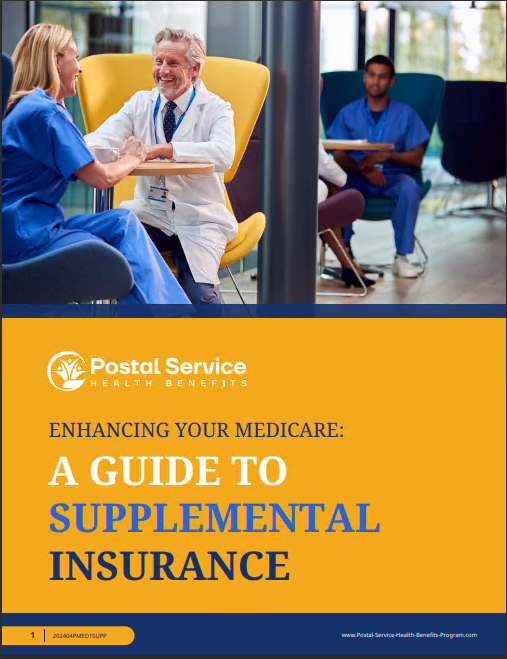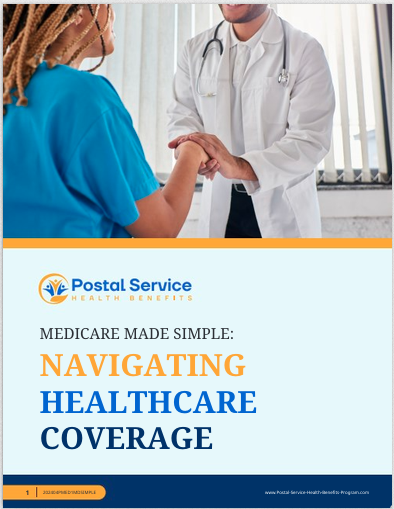Key Takeaways
-
The PSHB transition in 2025 significantly reshapes healthcare for USPS employees and retirees by introducing specialized plans tailored to their unique needs.
-
Understanding eligibility, enrollment requirements, and the integration with Medicare is essential to make informed decisions about your healthcare.
A New Chapter in Postal Healthcare
The Postal Service Health Benefits (PSHB) program is officially here, and it’s a game-changer for USPS employees, retirees, and their families. As of January 1, 2025, the familiar Federal Employees Health Benefits (FEHB) system is replaced for postal workers by the PSHB. This transition ensures that your healthcare plan is better aligned with the specific needs of the postal workforce.
So, what does this change mean for you? Let’s break it down.
Why the Change to PSHB?
The switch to PSHB stems from the Postal Service Reform Act of 2022. This legislation aimed to address financial challenges faced by USPS while ensuring robust healthcare coverage for its employees and retirees. Unlike the FEHB system, PSHB is designed exclusively for the postal community. It offers:
-
More tailored plan options to meet your needs.
-
Enhanced coordination with Medicare for retirees.
-
Potential cost savings through better integration of benefits.
By focusing solely on postal employees and their families, the PSHB program ensures healthcare plans align with the unique demands of your profession.
Who Needs to Enroll?
Eligibility and enrollment are two critical aspects of the PSHB transition. Here’s what you need to know:
Current Employees
If you’re an active USPS employee, you are automatically transitioned to a corresponding PSHB plan based on your existing FEHB coverage. However, it’s essential to review your plan details to ensure it still meets your needs.
Retirees
Retired postal employees also shift to PSHB plans but face additional considerations. If you’re already enrolled in Medicare Part A and Part B, you’re required to integrate your Medicare benefits with your PSHB plan. This integration often results in:
-
Reduced out-of-pocket costs.
-
Comprehensive coverage that blends PSHB and Medicare benefits.
Medicare Enrollment Requirements
For Medicare-eligible retirees and family members, enrollment in Part B is now mandatory unless you qualify for specific exemptions. These exemptions include retirees who were 64 or older as of January 1, 2025, or those retired on or before this date and not enrolled in Part B.
How Does Medicare Fit Into the Picture?
One of the most significant changes with the PSHB transition is how it coordinates with Medicare. If you’re already enrolled in Medicare Part A and Part B, your PSHB plan works alongside these benefits to provide more seamless and cost-effective coverage. Here’s how:
-
Prescription Drug Coverage: Your PSHB plan automatically includes a Medicare Part D Employer Group Waiver Plan (EGWP), which simplifies your pharmacy benefits.
-
Cost Sharing: Many PSHB plans waive deductibles or provide premium reimbursements for Medicare enrollees.
-
Streamlined Billing: You no longer have to juggle multiple insurance providers for claims—PSHB plans handle this integration for you.
Open Season and Life Events
Enrolling or making changes to your PSHB plan is straightforward, thanks to Open Season and Qualifying Life Events (QLEs):
Open Season
Each year, Open Season typically runs from mid-November to mid-December. During this time, you can:
-
Enroll in a new plan.
-
Switch plans to better suit your needs.
-
Add or remove family members from your coverage.
Changes made during Open Season take effect on January 1 of the following year.
Qualifying Life Events
Outside of Open Season, you can only make changes to your PSHB coverage if you experience a QLE, such as:
-
Marriage or divorce.
-
Birth or adoption of a child.
-
Change in employment status.
It’s vital to report these events promptly to avoid gaps in coverage.
Understanding Your Costs
Healthcare is an investment, and the PSHB program aims to make it more manageable. Here are some cost-related aspects to consider:
-
Premiums: While premiums vary by plan, the government continues to cover a significant portion of the cost for employees and retirees.
-
Deductibles and Copayments: These out-of-pocket expenses depend on your plan selection. For Medicare enrollees, many PSHB plans reduce these costs significantly.
-
Prescription Drug Costs: With the new $2,000 cap on out-of-pocket drug expenses under Part D, managing medication costs is easier than ever.
Exploring Your Plan Options
The PSHB program offers a wide range of plans tailored to postal employees and retirees. Whether you prioritize lower premiums, comprehensive benefits, or extensive provider networks, there’s a plan for you. During Open Season, take time to compare:
-
Coverage Levels: Ensure your plan meets your medical and pharmacy needs.
-
Provider Networks: Confirm your preferred doctors and hospitals are included.
-
Cost Sharing: Evaluate premiums, deductibles, and copayments to find the best value.
The Role of Employer Group Waiver Plans (EGWP)
If you’re a Medicare-eligible retiree, your PSHB plan includes an Employer Group Waiver Plan (EGWP) for prescription drugs. This enhancement:
-
Simplifies coverage by integrating it with Medicare Part D.
-
Caps out-of-pocket drug costs at $2,000 annually.
-
Offers access to a broad network of pharmacies nationwide.
The EGWP ensures your medication needs are covered without breaking the bank.
Staying Informed
Navigating the PSHB transition doesn’t have to be overwhelming. The key to success is staying informed and proactive. Here’s how:
-
Review Your Annual Notice of Change (ANOC): Each fall, you’ll receive an ANOC detailing updates to your plan. Use this to assess whether your current plan still meets your needs.
-
Attend Information Sessions: USPS often hosts webinars and in-person sessions to explain PSHB benefits and answer your questions.
-
Reach Out for Help: If you’re unsure about your options, contact your plan’s customer service or USPS HR representatives for guidance.
What Happens If You Don’t Act?
Failing to review or update your coverage during Open Season could leave you stuck in a plan that no longer serves your needs. For retirees, not enrolling in Medicare Part B if required could result in penalties or loss of coverage. Avoid these pitfalls by staying proactive and ensuring your coverage aligns with your current situation.
Benefits Beyond the Basics
The PSHB program isn’t just about basic healthcare coverage. It’s designed to enhance your overall well-being with additional benefits such as:
-
Telehealth Services: Many plans include access to virtual healthcare, making it easy to consult with doctors from the comfort of your home.
-
Wellness Programs: From gym memberships to weight-loss programs, PSHB plans often include resources to help you stay healthy.
-
Preventive Care: Enjoy free or low-cost screenings, vaccinations, and annual check-ups to catch potential health issues early.
Final Thoughts on Your Postal Healthcare Journey
The transition to PSHB in 2025 marks a significant milestone for USPS employees and retirees. With tailored plans, improved integration with Medicare, and enhanced benefits, the PSHB program ensures you have access to the healthcare you need. By staying informed and proactive, you can make the most of this new system and enjoy peace of mind about your health coverage.







